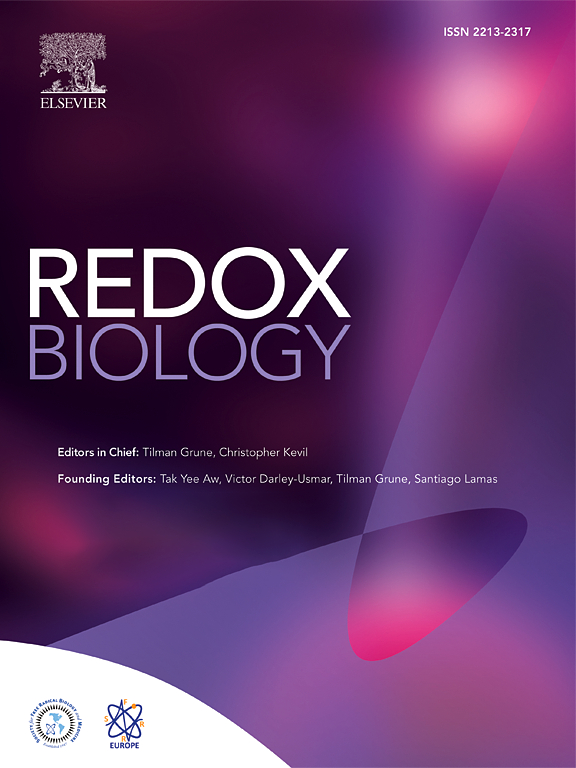Identification of a BACH1 lung cancer signature: A novel tool for understanding BACH1 biology and identifying new inhibitors
IF 11.9
1区 生物学
Q1 BIOCHEMISTRY & MOLECULAR BIOLOGY
引用次数: 0
Abstract
BACH1 is a transcriptional repressor that regulates oxidative stress and inflammatory responses and has emerged as a promising therapeutic target in cancer and other diseases. In lung cancer, BACH1 overexpression is linked to poor prognosis and metastasis, yet a consistent transcriptional signature reflecting its activity has not yet been defined. To address this, we performed RNA-Seq coupled with ChIP-Seq in BACH1-proficient and BACH1-deficient lung cancer cells, identifying a set of direct BACH1 target genes. This novel lung cancer BACH1 signature is highly sensitive and specific to BACH1 perturbation, unaffected by NRF2 modulation, and consistent across a large panel of cancer cell lines. Despite NRF2 binding to the same regions, BACH1-mediated gene repression is dominant over NRF2-driven gene activation, suggesting a previously unappreciated regulatory hierarchy between these two transcription factors. Importantly, this signature correlates with BACH1 basal levels in lung cancer, PDAC and melanoma cells, highlighting its relevance as a surrogate for BACH1 activity. Using this signature, we identified paeoniflorin as a novel FBXO22-dependent BACH1 degrader with anti-invasive activity, and the novel BACH1 target gene HTRA3 as a potential effector of BACH1's pro-migratory effect.
In summary, this novel BACH1 signature holds potential as a therapeutically relevant biomarker for identifying lung tumours with elevated BACH1 activity, serves as a powerful platform for discovering anti-invasive BACH1 inhibitors, and provides mechanistic insights into BACH1's role in driving metastasis.
鉴定BACH1肺癌特征:了解BACH1生物学和鉴定新的抑制剂的新工具
BACH1是一种调节氧化应激和炎症反应的转录抑制因子,已成为癌症和其他疾病的有希望的治疗靶点。在肺癌中,BACH1过表达与预后不良和转移有关,但反映其活性的一致转录特征尚未确定。为了解决这个问题,我们在BACH1精通和BACH1缺乏的肺癌细胞中进行了RNA-Seq和ChIP-Seq结合,鉴定了一组直接的BACH1靶基因。这种新的肺癌BACH1特征对BACH1扰动高度敏感和特异性,不受NRF2调节的影响,并且在大量癌细胞系中一致。尽管NRF2结合到相同的区域,但bach1介导的基因抑制比NRF2驱动的基因激活占优势,这表明这两种转录因子之间存在以前未被认识到的调控层次。重要的是,这一特征与肺癌、PDAC和黑色素瘤细胞中BACH1基础水平相关,突出了其作为BACH1活性替代品的相关性。利用这一特征,我们确定了芍药苷是一种新的依赖fbxo22的BACH1降解物,具有抗侵袭活性,而新的BACH1靶基因HTRA3是BACH1促迁移作用的潜在效应因子。总之,这种新的BACH1特征具有作为鉴定BACH1活性升高的肺肿瘤的治疗相关生物标志物的潜力,可作为发现抗侵入性BACH1抑制剂的强大平台,并为BACH1在驱动转移中的作用提供机制见解。
本文章由计算机程序翻译,如有差异,请以英文原文为准。
求助全文
约1分钟内获得全文
求助全文
来源期刊

Redox Biology
BIOCHEMISTRY & MOLECULAR BIOLOGY-
CiteScore
19.90
自引率
3.50%
发文量
318
审稿时长
25 days
期刊介绍:
Redox Biology is the official journal of the Society for Redox Biology and Medicine and the Society for Free Radical Research-Europe. It is also affiliated with the International Society for Free Radical Research (SFRRI). This journal serves as a platform for publishing pioneering research, innovative methods, and comprehensive review articles in the field of redox biology, encompassing both health and disease.
Redox Biology welcomes various forms of contributions, including research articles (short or full communications), methods, mini-reviews, and commentaries. Through its diverse range of published content, Redox Biology aims to foster advancements and insights in the understanding of redox biology and its implications.
 求助内容:
求助内容: 应助结果提醒方式:
应助结果提醒方式:


